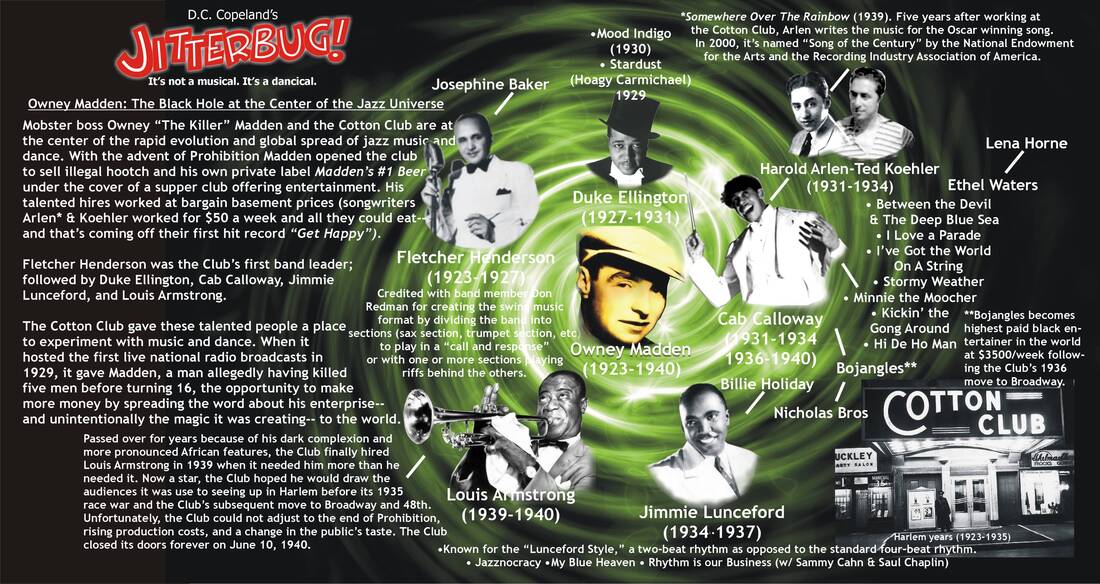Jitterbug! opens with the dancical's hero Billy Rhythm returning to Harlem during that spirit-killing time after failing to make it on the TOBA* circuit, the black entertainer's vaudeville. And for years he just crossed 7th Ave to stop by the clubhouse of his gang, the Jolly Fellows.
But it wasn't until seeing this picture that I got the idea to add a song and dance number. Finding the song was easy. Harold Arlen and Ted Koehler, two nice 20-something Jewish songwriters, were already in the script because they had been hired by the mobster owners of the Cotton Club (also in the play) to write a new show for them. At that time Arlen and Koehler had a national hit called "Get Happy," which was like an unofficial anthem for the Great Depression, promising "a land where the weary forever are free..."
Now when Billy crosses that street-- once known as the "Boulevard of Dreams"-- he sees an unemployment line of gray sad faced men holding onto a rope that keeps them from spilling out onto the sidewalk and although there may be music and dancing in the streets when the curtain rises, the audience is quickly reminded of the tough economic times with the perfect song.
And, since this is a "dancical," the men in line use the rope as a ballet barre, holding onto it with one hand while "trucking" with the other as they "plié, rise, kick-out, and lock step forward while the LIGHTS SLOWLY DROP on them until they disappear in the shadows."
And since this is also "musical realism," the music filters into the theater from a radio sitting on a tenement window. Ella Fitzgerald is singing this later truncated version that's just long enough to get Billy across the street.
On stage, this growing separation between the hopeless men in line and Billy is a metaphor symbolizing his indomitable spirit, propelled by his dancing away from despair toward hope which is found on the other side of the stage, the sunny side of the street, if you will, just behind the legendary "Tree of Hope."
*Theater Owners Booking Association





 RSS Feed
RSS Feed
